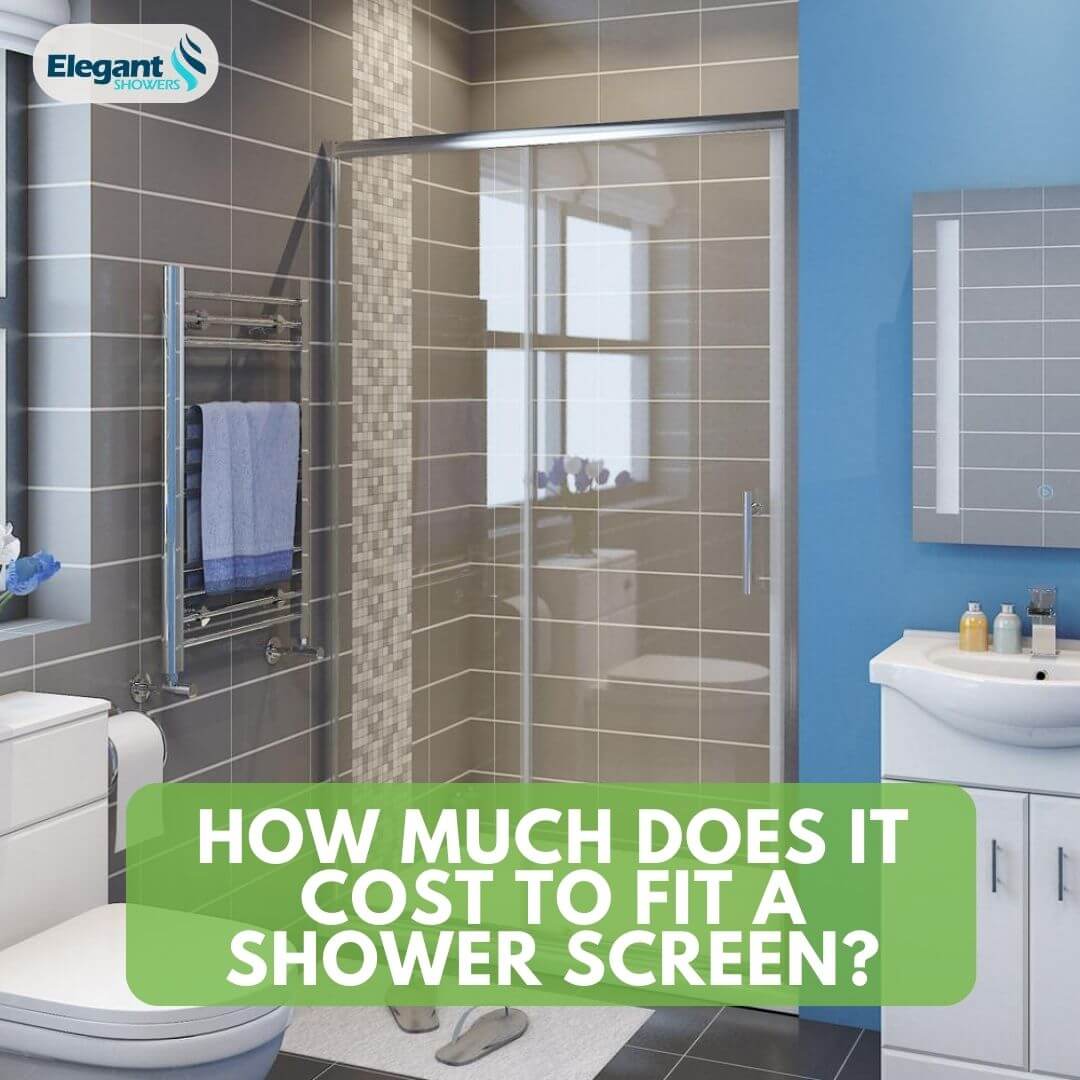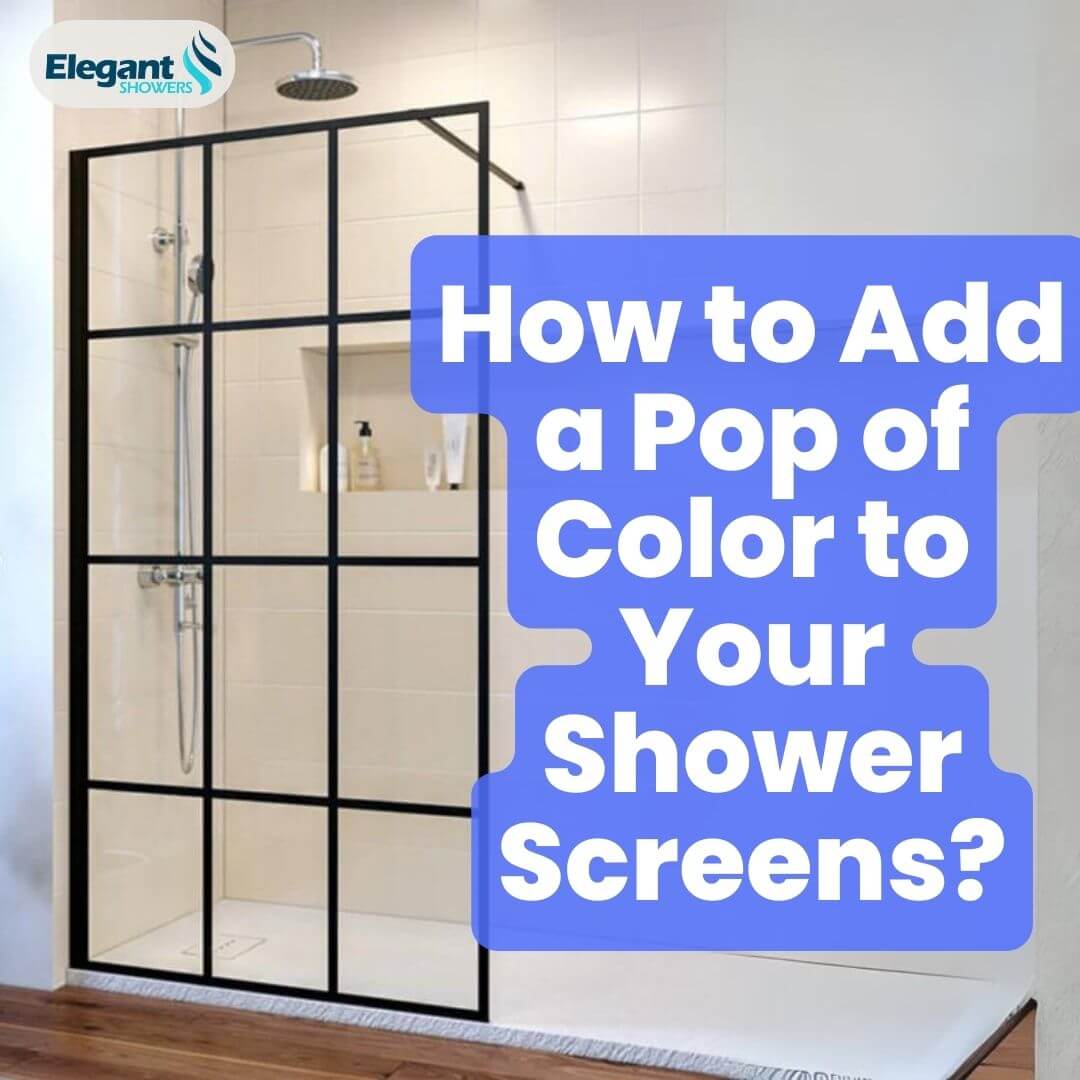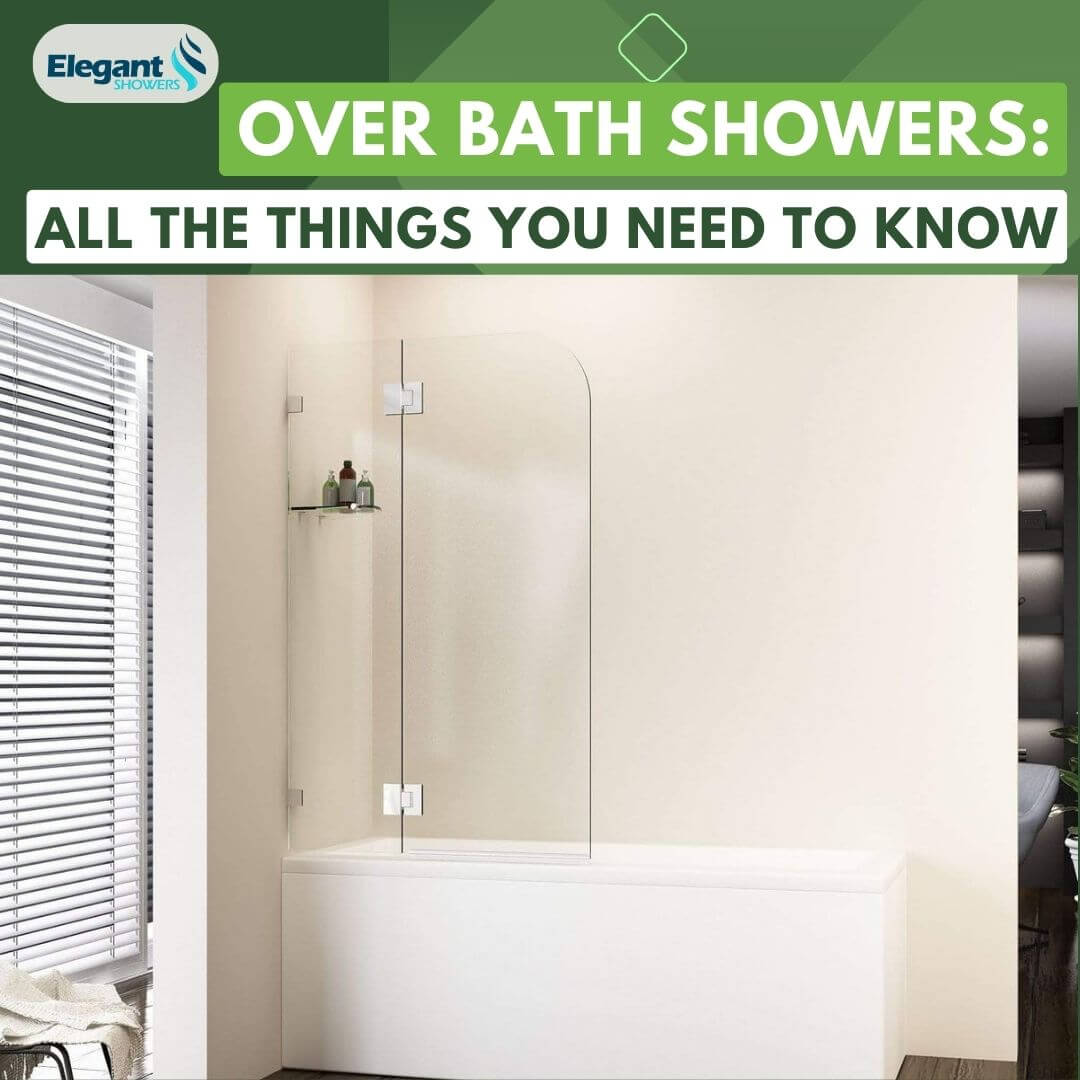Installing a new shower screen can completely transform the look and feel of your bathroom. But before taking on this project, it's important to understand the costs involved. In this comprehensive guide, we'll break down everything you need to know about fitting a shower screen in Australia, including typical price ranges, factors that influence cost, DIY vs professional installation, and tips for getting the best value.
Key factors that influence shower screen installation cost
The specific type of shower screen you choose plays a major role in determining the overall budget. Frameless glass screens, which utilize thick panels of tempered glass without any metal framing, are generally the most expensive option. Their sleek, contemporary aesthetics demand precise installation and high-quality materials that boost costs.
Full-scale walk-in style shower screens also sit at the higher end of the pricing spectrum. Their spacious layouts and lack of enclosing walls maximize airflow and light but require long expanses of glass to fully encompass the area. Complex niches with molded glass shelves also add greater customization expenses compared to basic screens.
When it comes to size, shower screen costs directly correlate with dimensions. Larger surface areas require more physical glass and metal materials to cover. Precisely measuring your existing shower space is crucial to get an accurate size quote and ensure proper fit. Even small quarter-inch gaps can compromise functionality and leak prevention.
Features and accessories also let you customize the look and functionality of your shower, but drive up the price tag. Opting for add-ons like hydro-massage jets, specialty textured or colored glass, built-in shelving, mirrors, or etching artistic designs into the glass panels enhances the user experience yet adds to the total expense.More tips for How to Replace Shower Screen Rollers?
The frame material used can impact the cost as well. Opting for brushed aluminum over stainless steel framing provides an attractive finish for less money. Thick 8-10mm glass delivers a heavy, luxury feel but is overkill for most residential uses where standard 4-6mm glass suffices.
Professional installation fees must be accounted for too, ranging from $150 to $500+ depending on the project’s complexity and the time investment required. Hard-to-access small bathrooms requiring intricate maneuvering of glass panels also boost labor expenses significantly.
Different designs cost different amounts of money, and there are some factors to consider: Shower Screen Ideas and Inspiration for Your Bathroom Remodel
DIY vs professional installation
Installing a shower screen yourself can greatly reduce the total cost by avoiding professional labor fees, which often add several hundred dollars. However, assessing your skill level and physical abilities is key before attempting DIY.
On the positive side, you skip expensive installer pricing by doing it yourself. If you're generally handy and have a willing helper, DIY can be a more affordable route for standard square screens. You also maintain full control over the process.
On the negative side, mistakes made during DIY jobs can lead to glass shattering or water leakage and damage behind walls. Unless you have professional-level experience working with glass and plumbing, the learning curve is steep. The work itself is also very physically demanding, requiring maneuvering of heavy, awkward glass panels into precise positions. Safety gear like gloves and eye protection is a must.
Hiring professional installers has its own pros and cons. The clear benefit is having experts handle the entire process from start to finish. Experienced companies accurately measure, make any needed adjustments, and finesse all final details for optimal performance. There is a much lower risk of issues developing down the line when the initial job is done right.
The main downside to professionals is the added cost of their labor and expertise. Expect to add a few hundred dollars or more if going the pro route rather than DIY. However, for niche screens and complex glass shower systems, paying this premium provides peace of mind and avoids headaches from installation mistakes.
Weigh your abilities honestly, get help for heavy lifting either way and don't be afraid to pay pros for specialty shower screen projects. Their expertise in delivering flawless results can be well worth the price.
How much do shower screens cost?
The total cost of a shower screen depends on the type, size, glass, and framing. Here is an overview of typical shower screen costs:
|
Shower Screen Type |
Average Cost Range |
|
Framed shower screen |
$300 - $800 |
|
Frameless shower screen |
$800 - $1,500 |
|
Semi-frameless shower screen |
$700 - $1,200 |
|
Corner shower screen |
$400 - $1,000 |
|
Walk-in shower screen |
$1,500 - $2,500 |
|
Custom niche shower screen |
$1,000 - $2,000 |
What is the cost of installing a shower screen?
Overall, the total cost to purchase and install a shower screen can range from $500 to $2,500+ in Australia, depending on the specific model, size, and features you select.
At the lower end, basic framed shower screens cost $300 to $800 for the screen itself. Add in $150 to $300 for installation, and the total falls around $500 to $1,000. These utilize aluminum framing and standard 4-6mm tempered glass.
For frameless shower screens, expect to pay $800 to $1,500 for the screen, plus $300 to $500 for installation. So the total frameless shower screen budget is approximately $1,100 to $2,000.
Larger customized niche and walk-in screens range from $1,000 to $2,000+ for the unit. With professional installation, the total cost is $1,500 to $2,500+.
The best value options for shower screen installation
One of the most budget-friendly options is a basic framed shower screen purchased right from a hardware store. Look for economical aluminum framing paired with standard 4-6mm tempered glass panels. The $300 to $800 price range delivers an attractive upgrade over a shower curtain.
Frameless pivot shower screens offer a similar open, walk-in style look as more expensive sliders, but with easier DIY installation. Their pivoting panels swing open gently, avoiding the need to perfectly align sliding door rollers. Great upgrade around $800-$1,000.
Those wanting a partly frameless aesthetic can find value in semi-frameless screens. These use sleek exposed glass on 1 or 2 sides, with more affordable aluminum framing on the remaining sides. Features modern style for under $1,000.
When selecting glass thickness, 6mm sufficiently withstands daily shower use unless you specifically desire ultra-luxury glass. Stick with 6mm tempered glass panels to save versus overpriced options like 8-10mm.
Custom shower screen sizes often waste glass materials and make DIY far more difficult. Find a standard-sized rectangle as close to your measurements as possible. 60" x 60" is a popular option.
While it's smart to have professionals handle niche screens, rectangular or pivot screens can be DIYed following online video tutorials. Take it slow and get help to avoid glass breakage.
The bottom line - focus your dollars on quality materials that enhance durability and appearance rather than overspending on unnecessary extras. Simple elegance wins.
Related reading about different shower screen: Shower Screen Materials: A Breakdown of Aluminum, Steel, and Glass Options
Tips for minimizing shower screen installation cost
Carefully measuring the dimensions of your existing shower area is one of the best ways to control costs. Precisely measured screens fit properly on the first try and minimize adjustments or return trips by installers. It also reduces wasted glass and framing materials. Double-check all measurements to avoid mistakes.
When selecting glass thickness, 6mm tempered glass is the most cost-effective choice for the majority of residential uses. Only splurge on thicker 8-10mm luxury-level glass if you specifically want the high-end look and feel. Otherwise durable 6mm glass performs excellently.
Opting for a basic aluminum framed shower screen over pricier frameless models also saves substantially. Framed versions have come a long way aesthetically, providing an attractive finish for far less.
Closely match the shower screen size to standard options like 60” x 60” whenever possible. Custom cutting glass and frames to unique dimensions incur extra shop fabrication fees you can avoid with a standard size.
Installing the shower screen yourself rather than hiring pros reduces labor expenses. But have helpers available and follow online tutorials carefully to prevent mistakes. Using an acrylic template ensures precise DIY glass cutting.
Check manufacturer websites for any seasonal rebates or discounts. Buying at the right promotion could potentially save you 10% or more. But never sacrifice quality just to save a little.
With smart, strategic choices you can control shower screen costs without sacrificing style and longevity. Measure meticulously, select standard sizes and affordable 6mm glass, and DIY install if able. Enjoy the upgrades at the best possible price.
Conclusion
Fitting a shower screen is an involved, multifaceted process - but it doesn't have to drain your bank account. With average costs ranging from $300 - $2,500+ in Australia, you can find an attractive screen option for nearly any bathroom and budget. Focus on accurately measuring your space, sizing down glass extras unless needed, and being realistic about your installation abilities. With the right combination of well-informed choices, even a pricey niche screen build can provide lasting value and enjoyment.
Q&As
Q: What are some signs my existing shower screen needs replacing?
A: Indications your shower screen needs replacing include loose frames or hardware, broken/chipped glass, leaks, limescale buildup, corrosion, and general appearance of age/wear. Replacing an outdated screen can fully refresh the look of your bathroom.
Q: Should I get a clear glass or a colored tint for my shower screen?
A: Clear glass is the most common and cost-effective choice, providing a clean look that doesn't distract from the rest of your bathroom décor. However, light tints like bronze, gray, or frosted can add stylish privacy. Darker tints like black reduce visibility significantly.
Q: What frame finish should I choose for my shower screen?
A: Most frames utilize aluminum or stainless steel. Brushed aluminum finishes offer an attractive, contemporary look for an affordable price. Polished chrome and stainless steel appear more upscale and pair well with sleek modern bathrooms. Consider your overall aesthetic.
Q: What thickness of glass is best for shower screens?
A: 6mm tempered glass is the recommended standard for shower screens, providing safety, durability, and affordability. Thicker glass like 8-10mm provides a luxury feel but is overkill for residential use. Frameless screens may require 8mm+ for support.
Q: Should I get shower screen water-repellent treatment?
A: Water-repellent treatments can improve water flow, reduce staining, and make cleaning easier. While not a necessity, it can extend the like-new appearance of glass. DIY kits are available.






